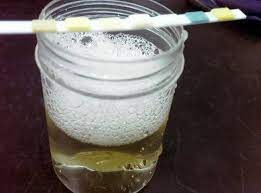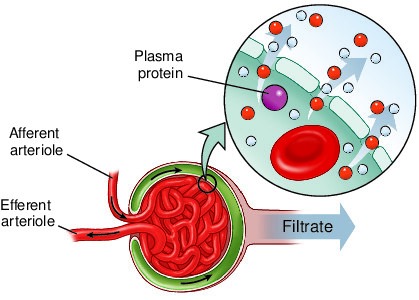
Understanding Protein Loss in Urine: Causes, Tests, and Treatment 2024.
Protein loss in urine, also known as proteinuria, is a condition where an excessive amount of protein is excreted in the urine. While small amounts of protein in the urine are normal, higher levels can be a sign of kidney problems or other underlying health issues. Understanding the causes, testing, and treatment options is crucial for managing this condition effectively.
What is Proteinuria ?
Proteinuria occurs when your kidneys are not filtering blood properly, allowing proteins like albumin to leak into the urine. Normally, kidneys prevent large molecules like proteins from passing into the urine, but certain health conditions can disrupt this process. Early detection is important as persistent proteinuria can lead to kidney damage over time.
Causes of Proteinuria ?
Proteinuria can be temporary or persistent, and the causes vary widely:
Kidney Disease
Kidney diseases, such as Chronic Kidney Disease (CKD) are common causes of protein loss in the urine. When the kidney’s filtering units (glomeruli) are damaged, they allow protein to pass into the urine. Conditions like glomerulonephritis or diabetic nephropathy are also major culprits.
Diabetes and Hypertension
Diabetes and high blood pressure are leading causes of kidney damage. Over time, poorly controlled diabetes and hypertension strain the kidneys, reducing their ability to filter properly, which leads to proteinuria.
Infections or Inflammation
Infections, particularly kidney infections, or inflammatory conditions like lupus can also cause protein to appear in the urine. In such cases, proteinuria is often a symptom of the underlying infection or inflammation.
Pregnancy (Preeclampsia)
In pregnant women, proteinuria may indicate preeclampsia a potentially dangerous condition characterized by high blood pressure and kidney dysfunction. This requires immediate medical attention.
Medications and Physical Stress.
Certain medications, including nonsteroidal anti-inflammatory drugs (NSAIDs) and chemotherapy drugs, may cause proteinuria as a side effect. Physical stress or intense exercise can also cause temporary protein loss in the urine.
Symptoms of Protein Loss in Urine.
In many cases, proteinuria does not cause noticeable symptoms in its early stages. However, as the condition progresses, you might notice:
– Foamy urine (due to excess protein).
– Swelling (edema) in the hands, feet, or face (from fluid retention).
– Fatigue or loss of appetite (associated with kidney dysfunction).
– Frequent urination or discomfort while urinating.

Tests to Diagnose Proteinuria
If your doctor suspects proteinuria, they will conduct a series of tests to confirm the diagnosis and determine the underlying cause.
Urine Dipstick Test
A urine dipstick test is a simple, quick test where a chemically treated strip is dipped into a urine sample. It changes color if there is an abnormal amount of protein in the urine. While convenient, this test can only give a rough estimate and may need follow-up with more accurate tests.
Urine Protein-to-Creatinine Ratio (UPCR)
This test measures the ratio of protein to creatinine in a single urine sample. It gives a more precise measurement of proteinuria and is often used for diagnosis and monitoring.
24-Hour Urine Collection
In this test, urine is collected over a 24-hour period to measure the total protein excreted. This test is more accurate in detecting the amount of protein loss, particularly in patients with significant proteinuria.
Blood Tests.
Blood tests may be done to check kidney function, particularly serum creatinine and glomerular filtration rate (GFR) which help determine how well the kidneys are filtering waste and protein.
Kidney Biopsy.
In certain cases, a kidney biopsy may be recommended to analyze kidney tissue and identify the exact cause of protein loss, particularly if a specific kidney disease like glomerulonephritis is suspected.
Read more : Kidney Health Tips for Everday Life.
https://www.drsuhasmondhe.com/kidney-health-tips-for-everyday-life-healthy/
Treatment Options for Proteinuria.
The treatment for proteinuria depends on the underlying cause. Managing the root cause is essential to preventing further kidney damage.
Managing Underlying Conditions
– Diabetes: Controlling blood sugar levels through medication, diet, and lifestyle changes is crucial in managing diabetic nephropathy.
– High Blood Pressure: Medications like ACE inhibitors and ARBs (angiotensin II receptor blockers) are commonly prescribed to lower blood pressure and reduce protein leakage from the kidneys.
– Infections : If proteinuria is caused by an infection, treating the infection with antibiotics or antiviral medications is essential.
Dietary Modifications
Patients with proteinuria are often advised to reduce their salt and protein intake. A low-sodium and low-protein diet can help reduce the workload on the kidneys and prevent further damage.
Medications
In addition to blood pressure medications, doctors may prescribe:
– Diuretics : To reduce swelling and help remove excess fluid from the body.
– Steroids or immunosuppressive drugs: In cases of autoimmune conditions like lupus, where the body’s immune system is attacking the kidneys.
Dialysis or Kidney Transplant
In severe cases where kidney function has deteriorated significantly, dialysis or a kidney transplant may be necessary to support the body’s filtration process and manage proteinuria.
-While not all causes of proteinuria are preventable, adopting a healthy lifestyle can reduce the risk:
– Control blood pressure and blood sugar levels through regular monitoring and medication.
– Maintain a healthy diet low in sodium and protein to support kidney function.
– Stay hydrated to keep your kidneys healthy.
– Exercise regularly, but avoid excessive physical stress.
Conclusion


Leave a Reply